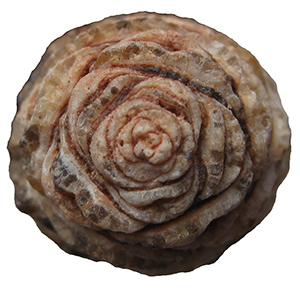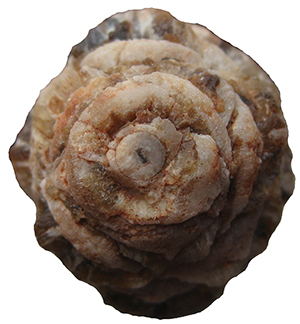
 |
 |
Jurassic
Period:
199.6-145.5 Million Years Ago
Gallery: Cerro Cuadrado
Gallery: Cerro Cuadrado
 Pararaucaria patagonica Santa Cruz, Argentina 4 cm long x 2 cm wide |
Phyllotaxis is the study of patterns made by similar plant parts such as leaves, seeds, and scales. Phyllotaxis or Phyllotaxy was one of the first biological subjects to be mathematized (Jean, 2001). Phyllotaxis is derived from the Greek words phyllo "leaf" and taxis "arrangement" (Borror, 1988). Scales in the P. patagonica cone above spiral forming helices around the stem. These helices spiral to the right and to the left. The number of left and right spirals are often consecutive terms in the Fibonacci sequence. The P. patagonica cone above has 5 spirals to the left and 3 to the right. I have noticed other P. patagonica cones that are 3 to the right and 5 to the left. Spiral phyllotaxes exhibit chirality. On a modern Pinus sp. tree one would find just as many left handed cones as right handed cones (Rutishauser & Peisl, 2001). |
 Top View of Specimen |
 View of Stem |
Bibliography |
Borror,
D.J. (1988). Dictionary of Word Roots and Combining Forms.
California: Mayfield Publishing Company. Rutishauser, R. & Peisl, P. (2001). Phyllotaxy. Encyclopedia of Life Sciences. Macmillan Publishers Ltd, Nature Publishing Group/www.els.net |










